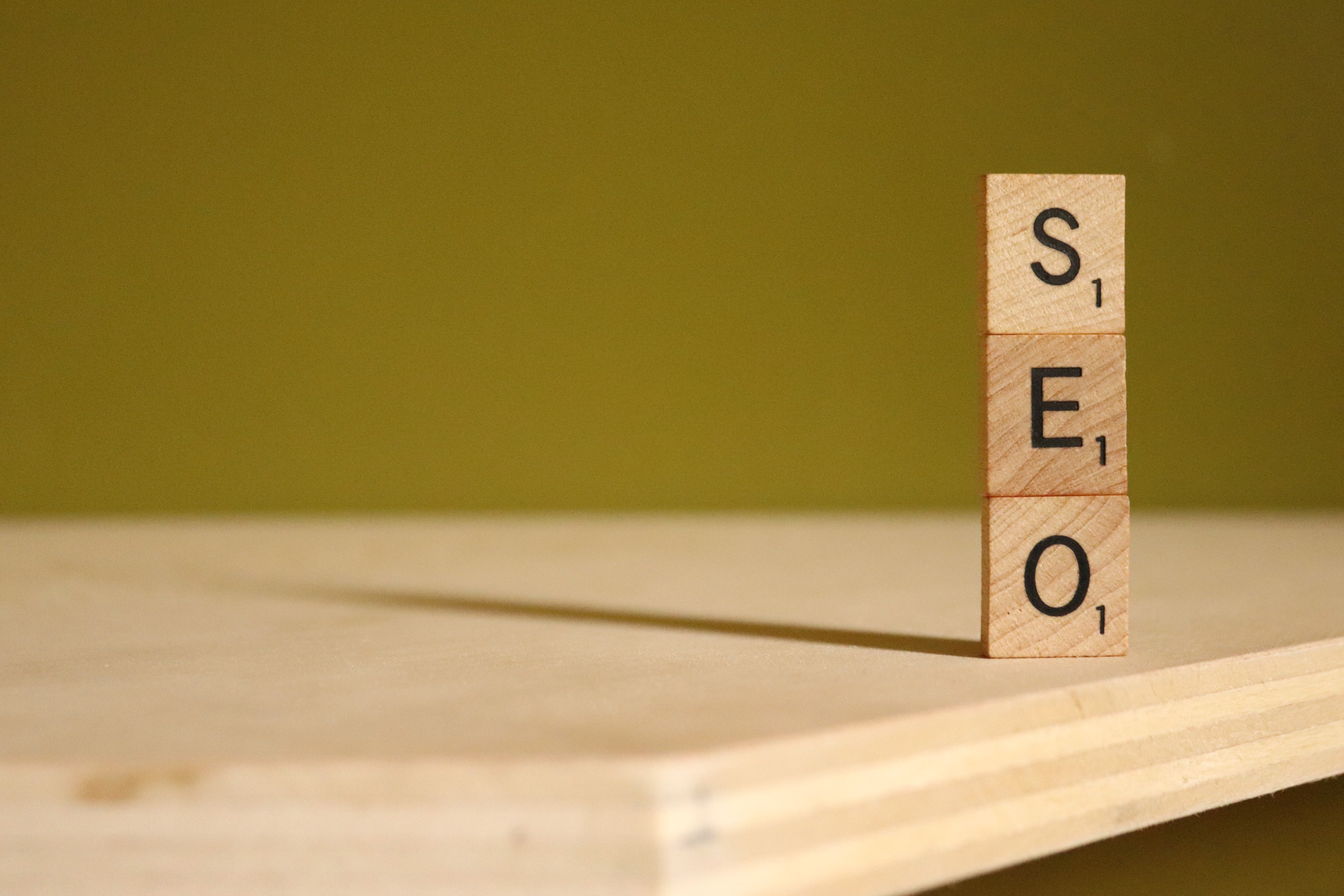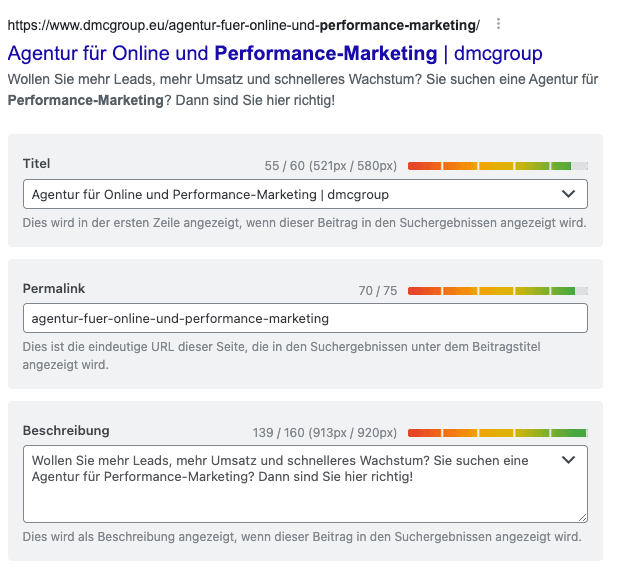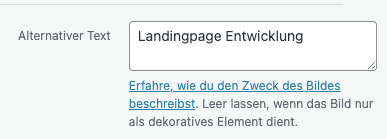Erfolgreich SEO-Content erstellen
A good SEO text is characterized by user-friendliness, completeness and relevance. We give you instructions on how to write SEO texts.
by Aleksandra Tomic
18.04.2023

Texts are the most important source of good SEO results. Nothing has more influence on high rankings than a well-structured, content-rich story in text form.
Content for high rankings
SEO texts are web content that can achieve high rankings on Google. For a text to rank highly, however, a number of factors must interact. For example, the Google algorithm evaluates the text according to relevance (does the text match the sender?) and quality (does the text provide a high benefit?). Google’s benchmark is the virtual user and the question of whether the SEO text represents a good, authentic conversation.
Step 1: Determine target group
Key question: Who are we writing the article for?
- Who are my readers?
- What interests my readers?
- What is my target group’s biggest problem?
- What should the text convey to the reader?
By the way, it always helps to take a look at your competitors: how do they appeal to your target group?
Step 2: Target definition
This is followed by the question of your intention: What do you want to achieve with the SEO text?
- Awareness: as much traffic as possible
- Sympathy: intensive, in-depth engagement with the topic
- Action: e.g. a purchase or a contact request
Step 3: Define keywords – what am I actually writing about?
Keywords are the terms that your target group enters into the search mask of search engines. They are therefore the most elementary text modules of every SEO text and should be used extensively. This is because they decide how well a search engine ranks your text for the searcher, i.e. for which search terms your text is displayed.
Main and secondary keywords
The integration of a main keyword as well as secondary keywords and semantically related words not only ensures a varied text structure, but also helps to be found for different search terms on the same topic. The main keyword is based on the search entries made by users.
An example: The main keyword “jacket” is searched for 4,400 times a month in Austria, which is a high value and one of the criteria for the main keyword. We also need secondary keywords that. Support the main keyword and go into more detail about the product/service. Possible secondary keywords could then be: “buy jacket online”, “winter jacket”, “men’s jackets”, etc.
Planning of main and secondary keywords
If a customer specifies the keywords, we use the Keyword Planner to determine the main keywords and secondary keywords. While the main keyword can be used variably in the SEO text, there are some places where the main keyword should definitely appear:
- In the URL
- In the H1 headline
- At the beginning of the text
- In at least one further H2
- In the image description (alt tags)
- In the meta description
Keyword density
Search engines do not provide precise information on the optimum keyword density in the text. Google wants a sensible, balanced number and not an unfiltered inflation of keywords.
Learn
more
We are more than just experts – our dedicated team of designers, developers and marketing specialists work hand in hand to take your digital presence to the next level.
Ready for the next step?
Contact us and find out more about our services.
Step 4: Text design and structure
Even if SEO texts are used to be found by search engines, texts are primarily written for the target group. This is because the value of the text for readers is the overriding ranking criterion for all search engines. Clarity and reading flow should be at the forefront of every text.
H1 to H6 create structure
All headings are formatted as HTML headings of levels H1 to H6 so that the document structure is clearly recognizable for Google and readers. A short teaser text and a crisp conclusion with a call-to-action form the framework of the article.
Serve up tidbits of text!
Sub-headings and short paragraphs (max. 4 lines) make it easier to get an overview, and keywords marked in bold make the content clear even when skimming the text. Images and graphics also make the article much more visually appealing. This also creates the possibility of attracting interested parties to the article via Google Image Search.
How long should the text be?
In general, your text should cover all questions relating to the search query in the best possible way. But don’t start rambling and making the text artificially larger, readers will notice that immediately.
Improvement of the user experience and dwell time
It is important for SEO to constantly find new content ideas. One approach would be to answer frequent questions about a product/keyword. Since search terms in the form of questions make up a significant proportion of the search queries entered into Google every day.
Step 5: Metadata, image file, alt tags and links
Writing a good SEO text also involves maintaining the metadata. The metadata – title tag, meta description and alt tag – are not visible to users, but are read by search engines and promote the highest possible ranking.
Metatitle, permalink and meta description
The SEO title is displayed in the snippets. A snippet is a short summary of the content of a web page written by you, which is then displayed in the search results (SERPs) on search engines. It is one of the most important Google ranking factors. Note that the main keyword should be included at the beginning of the snippet, which consists of a title tag (headline), meta description (text) and the permalink (link to the website)
Title-Tag
A title tag is the one-line headline of the snippet. The ideal length of the title tag is between 55 and 65 characters (as of 2023).
Meta-Description
The meta description should describe the content of the website in short, concise sentences. Ideally, it ends with a short teaser, e.g. “Contact us now” or “Find out more now”. The ideal description length is between 120 and 158 characters (as of 2023).
Permalink
For a good ranking, the permalink – i.e. the URL of the target website – should at least contain the main keyword. The ideal permalink length is between 70 and 75 characters (as of 2023).

Image files
Search engines cannot recognize the content of images or cannot recognize it well. The naming of the uploaded images in the meta tags therefore plays an important role in the ranking of the website.
Alt-Tags
Alt tags are descriptions that are added to images and graphics. They should describe exactly what can be seen in the pictures, e.g. the main motif or the core message.
File name: landingpage-development.jpeg (hyphens are used to separate several words in the name).
File size: A maximum of 200 KB is ideal


Links to other websites
If you insert links to other websites, make sure that the text is descriptive, i.e. that it indicates the content of the website with concise, meaningful key words.
Example
No: “Read more here”
Yes: “Guide for SEO content”
This tells the reader in advance what to expect and they are more likely to follow the link.
We support you in the creation of SEO content and the optimization of your content.
Contact us and let’s strengthen your online presence together!
Need
help?
Frequently asked SEO questions
What is SEO?
SEO is the abbreviation for Search Engine Optimization. SEO describes the measures of on-page and off-page optimization to improve the search engine ranking of a domain.
What is on-page optimization
These are the measures that an SEO manager can take on the website (onpage). This includes, for example, improving the meta data, internal linking, expanding the content, etc.
What is off-page optimization?
These are the measures that an SEO manager can take outside the website (offpage). This includes, for example, building backlinks, social signs and presence on social media.
What is SEO content?
In search engine optimization, SEO content refers to all content on a website that is designed to appear high up in the search results. Examples are meta tags, keywords, structured headlines.
Is search engine optimization (SEO) worthwhile?
A good SEO strategy is the most efficient way to get a website to the top of the search engine results list. SEO is generally worthwhile for anyone who wants to win new customers with the help of their website.
How quickly does SEO work?
SEO does not work overnight. SEO is a medium and long-term, continuous process that takes sufficient time. Once established, a good ranking is guaranteed in the long term.
We support you with how-to guidelines and provide you with the latest information on current industry trends.
Sign up for our monthly newsletter and stay up to date!
Stay
tuned
More articles